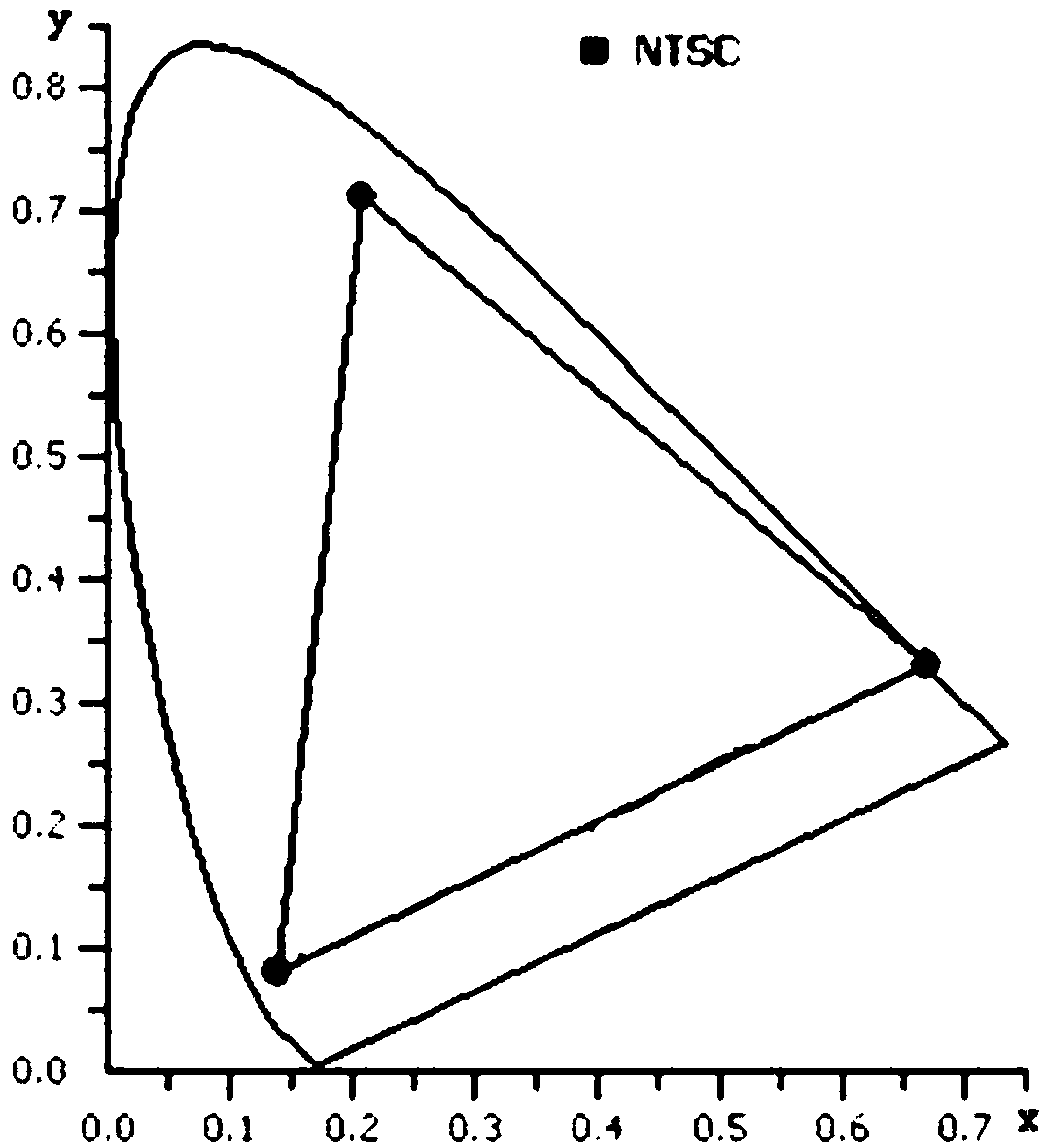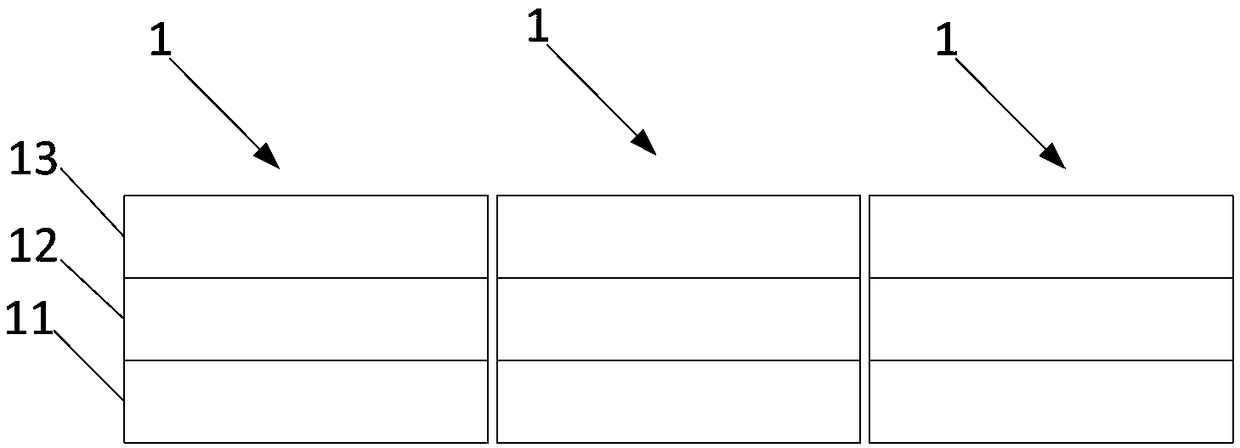Organic light emitting device
An electroluminescence device and electroluminescence technology, which are applied in the directions of luminescent materials, organic semiconductor devices, circuits, etc., can solve the problem of insufficient color gamut of OLED devices, and achieve the advantages of increasing the color gamut area, increasing the length of the microcavity, and increasing the luminous flux. Effect
- Summary
- Abstract
- Description
- Claims
- Application Information
AI Technical Summary
Problems solved by technology
Method used
Image
Examples
Embodiment 1
[0103] The embodiment of the present invention provides a specific example of an organic electroluminescent device. The organic electroluminescent device in this embodiment includes monochromatic organic light emitting diodes with three light emitting wavelengths, namely red organic light emitting diodes, green light organic light emitting diodes and blue light organic light emitting diodes. Among them, the three organic light emitting diodes all have a microcavity structure. The light transmittance of the second electrode layer was 35%.
[0104] In this embodiment, the λ corresponding to the red organic light emitting diode 1 =630nm,n 1 = 2, L 1 =1260nm;
[0105] The λ corresponding to the green organic light-emitting diode 2 =520nm,n 2 = 3, L 2 =1560nm;
[0106] λ for blue organic light-emitting diodes 3 = 460nm, n 3 = 2, L 3 =920nm.
[0107] The device structure of the red organic light-emitting diode in this embodiment is: ITO (10nm) / Ag (100nm) / ITO (10nm) / CuPc (2...
Embodiment 2
[0112] The embodiment of the present invention provides a specific example of an organic electroluminescent device. The difference from the organic electroluminescence device provided in Example 1 is that the number of light-emitting layers of the green organic light-emitting diode is two, and a connection layer is arranged between the two light-emitting layers.
[0113] In this embodiment, the device structure of the green organic light emitting diode is: ITO (10nm) / Ag (100nm) / ITO (10nm) / CuPc (20nm) / TPD (90nm) / CBP:Ir(ppy) 3 (10%,30nm) / TPBi(40nm) / Li 2 CO 3 (1nm) / HAT-CN(10nm) / CuPc(20nm) / TPD(90nm) / CBP:Ir(ppy) 3 (3%, 30nm) / TPBi(40nm) / LiF(1nm) / Mg:Ag(20%, 15nm) / NPB(60nm).
Embodiment 3
[0115] The embodiment of the present invention provides a specific example of an organic electroluminescent device. The difference from the organic electroluminescence device provided in Example 1 is that the light-emitting layer of the green organic light-emitting diode contains a thermal activation delay (TADF) material.
[0116] In this embodiment, the device structure of the green organic light-emitting diode is: ITO (10nm) / Ag (100nm) / ITO (10nm) / CuPc (20nm) / TPD (280nm) / 4CzIPN:Ir(ppy) 3 (10%)(30nm) / TPBi(40nm) / LiF(1nm) / Mg:Ag(20%,15nm) / NPB(60nm).
PUM
 Login to View More
Login to View More Abstract
Description
Claims
Application Information
 Login to View More
Login to View More - R&D
- Intellectual Property
- Life Sciences
- Materials
- Tech Scout
- Unparalleled Data Quality
- Higher Quality Content
- 60% Fewer Hallucinations
Browse by: Latest US Patents, China's latest patents, Technical Efficacy Thesaurus, Application Domain, Technology Topic, Popular Technical Reports.
© 2025 PatSnap. All rights reserved.Legal|Privacy policy|Modern Slavery Act Transparency Statement|Sitemap|About US| Contact US: help@patsnap.com



